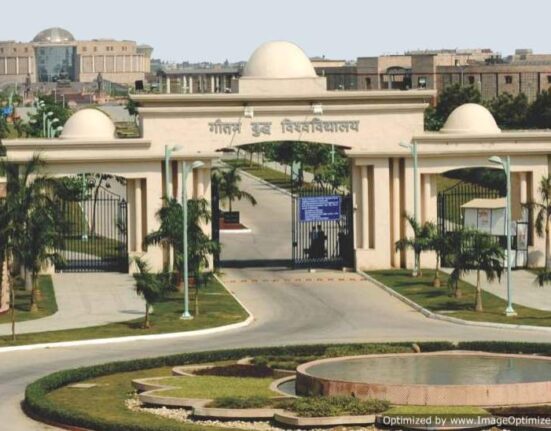Introduction
A general rule of interpretation is that if a word used in a statute excludes certain cases in its common meaning, it should not be constrained unnecessarily to include those cases. An exception to this rule is that when the objectives of the statute are not met by excluding the cases, then the word may be interpreted extensively so as to include those cases. However, when a word is ambiguous i.e. if it has multiple meanings, which meaning should be understood by that word? This is the predicament that is resolved by the principle of Beneficial Construction.
Beneficial Construction
Beneficent construction involves giving the widest meaning possible to the statutes. When there are two or more possible ways of interpreting a section or a word, the meaning which gives relief and protects the benefits which are purported to be given by the legislation should be chosen. A beneficial statute has to be construed in its correct perspective so as to fructify the legislative intent.
It is also true that once the provision envisages the conferment of benefit limited in point of time and subject to the fulfillment of certain conditions, their non-compliance will have the effect of nullifying the benefit. There should be due stress and emphasis to Directive Principles of State Policy and any international convention on the subject.
There is no set principle of construction that beneficial legislation should always be retrospectively operated although such legislation is either expressly or by necessary intendment not made retrospective. Further, the rule of interpretation can only be resorted to without doing any violence to the language of the statute. In case of any exception when the implementation of the beneficent act is restricted the Court would construe it narrowly so as not to unduly expand the area or scope of the exception.
The liberal construction can only flow from the language of the act and there cannot be placing of unnatural interpretation on the words contained in the enactment. Also, beneficial construction does not permit the rising of any presumption that protection of widest amplitude must be deemed to have been conferred on those for whose benefit the legislation may have been enacted.
Case Laws : Beneficial Construction
B. Shah V. P.O[1]
Provision of Maternity Benefit Act, 1961,
Sec 5 Right to payment of maternity benefit says,
Subject to the provision of this Act, every women shall be entitled to , and her employer shall be liable for, the payment of the maternity benefit at the rate of the average daily wage for the period of her actual absence, that is to say, the period immediately preceding the day of her delivery, the actual day of her delivery and any period immediately following that day.
Facts of the Case:
- Ms. X was working in a estate belonging to the appellant was allowed leave of absence on maternity leave.
- After her delivery, the appellant paid her on account of maternity benefit an amount equivalent to what she would have earned on the basis of her average daily wages in 72 working days falling within 12 weeks of the maternity period excluding 12 Sundays being wageless holiday which fell during the period of the respondent’s actual absence immediately preceding and including the day of her delivery and the 6 weeks immediately following that day.
- In this case, a woman who used to 6 days a week was paid for only 6×12=72 days instead of 7×12=84 days.
- High Court held that 12 weeks for which maternity benefit is provided for in Sec 5[2] of the Act must be taken to mean 12 weeks of work and the computation of the benefit had to be made with reference to the actual days on which the woman would have worked but for her inability.
Use of Interpretation Rule:
SC held that:
- The Act does not contain any definition of the word “week”.
- It has to be understood in its ordinary dictionary meaning.
- In the context Sec 5 of the Act, the term has to be taken to signify a cycle of 7 days including Sundays.
- By using the words, namely, “for the period of her actual absence immediately preceding and including the day of her delivery and for the 6 weeks immediately following that day’s the legislature intended that computation of maternity benefit is to be made for the entire period of the woman worker’s actual absence, that is, for all the days including Sundays which may be wageless holidays falling within that period and not only for intermittent period of 6 days thereby excluding Sundays falling within that period.
- Hence court dismissed the Appeal.
In interpretation provisions of beneficial pieces of legislation which is intended to achieve the object of doing social justice to woman workers employed in the plantations and which squarely fall within the preview of Article 42[3] of the Constitution, the beneficial rule of construction which would enable the woman worker not only to subsist but also to make up her dissipated’ energy, nurse her child, preserve her efficiency as a worker and maintain the level of her previous efficiency and output has to be adopted by the Court.
Manohar lal Vs The Sate of Punjab[4]
Provision of Punjab Trade Employees Act, 1940 says:
Sec7 (1) – Employer shall keep his shop closed on the day which he had himself chosen as a “close day”.
Facts of the Case:
- The appellant who was a shopkeeper was convicted for the second time by the Additional District Magistrate for contravening the provisions of Sec 7 (1) of the Punjab Trade Employees Act, 1940.
- He raised the plea that the Act did not apply to his as he did not employ any stranger but that himself alone worked in it and that the application of Sec 7 (1) to his shop would be violative of his fundamental rights under Article 14[5], 19(1) (f) and (g)[6] of the Constitution and also that the restriction imposed was not reasonable within Article 19 (6) as it was not in the interest of the general.
Use of Interpretation Rule:
- Court Held, that the main object of the Act was the welfare of the employees and to protect their as well as the employers’ health by preventing them from over work. Such a restriction being in the interest of the general public was reasonable within the meaning of Article 19 (6) of the Constitution.
- The provisions of Sec 7 (1) were constitutionally valid and were justified as for securing administrative convenience and avoiding evasion of those provisions designed for the protection of the workmen.
Conclusion: Beneficial Construction
Laws that are enacted with the object of promoting the general welfare and facing urgent social demands receive beneficial legislation. A beneficial statute has to be construed in its correct perspective so as to fructify the legislative intent. Although beneficial legislation does receive liberal interpretation, the Courts try to remain within the scheme and not extend the benefit to those not covered by the scheme.
The courts must be vigilant to ensure that benefits conferred by welfare legislation must not be defeated by subtle devices. It is duty of the court to get behind the smokescreen and discover the true state of affairs. It can go behind the form and see the substance of the transaction.
The strict and narrow jacket concept of law is no longer available for the purpose of interpreting a social welfare piece of legislation especially after the new millennium. The policy of a democratic Government should run in conjunction with the dynamic interpretation offered by the courts. The courts exist for the society and in the event the courts feel the requirement in accordance with principles of justice, equity and good conscience, courts must rise up to the occasion to do complete justice and meet expectation of the people.
Beneficial Construction of statutes have enormously played an important role in the development and beneficial interpretation of socio-economic legislation and have always encouraged the Indian legislators to make more laws in favor of the backward class of people in India.
[1] AIR 1978
[2] Right to payment of maternity benefit
[3] Provision for just and humane conditions of work and maternity relief.
[4] AIR 1961
[5] Equality before Law
[6] Right to practice any profession, or to carry on any occupation, trade or business.







Leave feedback about this